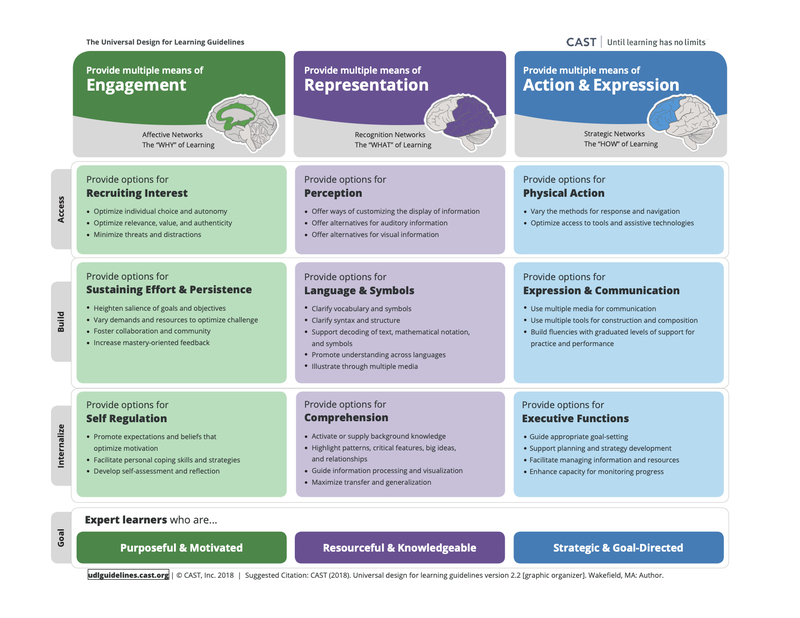Heather Bennett’s Updates
Universal Design for Learning & Differentiated Learning
Differentiated learning is defined within our course as a learning environment:
Where individuals and groups of learners can work at a pace that suits their needs and where data analysis allow that these processes are readily and conveniently managed by teachers. This ensures that all learners are able to make progress measured against common learning goals.
The premise of differentiated learning is compelling. It should be our goal as educators to craft learning environments where students can self-pace, receive robust support from educators, and escape boredom.
I wonder, though, if the individualized learning emphasized in differentiated learning actually exacerbates students' sense of shame or otherness. A learning plan tailored to an individual potentially emphasizes their differences instead of allowing them to feel included in a community. (I may be misunderstanding what differentiated learning looks like in practice, but this seems like a potential pitfall to me?)
Universal Design for Learning (UDL), by contrast, deals with learner differences by providing multiple ways for every student to engage the class material. Instead of tailoring to individual students or promoting self-pacing (which as video 7B pointed out can feel isolating), UDL promotes the creation of a variety of materials to communicate content and engage students' diverse motivations and experiences:
The goal of UDL is to design curriculum that can be used and understood by everyone and to eliminate barriers in the learning environment to create learning experiences that are accessible to all people regardless of their differences.
From Accessibility: Designing and Teaching Courses for All Learners, Modules 3 and 4
UDL primarily focuses on multiple means of engagement, representation, and action & expression and provides a model for answering the why, what, and how of learning.
The main difference is the distinction between providing support for individual students (differentiated learning) and removing systemic barriers in education in order (UDL) to provide an inclusive, communal, collaborative learning experience. It seems possible for differentiated learning and UDL to help learners arrive at the same place, but I view UDL as the more holistic model.
One example of UDL would be providing a document in multiple formats, such as an image with alternative text, PDF, and black and white table. This small step meets the UDL recommendations for "Perception." Sighted users can view the image, someone using assistive technology such as a screen reader may find the PDF easier, and the black and white table may be easier for learners with attention disabilities. Ideally, the font used on the infographic would also be transformable to enable low-vision and dyslexic users (among others) to change the font to suit their needs. If creating multiple formats of a document is overwhelming or unfamiliar to an educator, they could instead communicate the information in a way that is flexible and transformable into a variety of different formats (i.e., a Word Document that can be converted into a PDF).
As a fun example to end with, here are two versions of the trailer for Frozen: The official trailer and an audio description trailer that makes the video accessible to people with visual impairments. (If you only watch one, I recommend the audio description.)
The audio description is delightful and accomplishes the goal of making the trailer perceivable and understandable to anyone with a visual impairment. But sighted users benefit too. The audio description conveys the humor of the trailer in a new way and allows viewers to notice things they might have missed in the official trailer.
UDL is a unicorn; that is, a beautiful thing to dream of, a "motivating fiction," but not something you'll ever encounter. Nonetheless, UDL can be what Jonathan Hsy and Rick Godden call a "motivating fiction." Educators will never be able to provide materials that are accessible to every single student; adaption of materials to accommodate learning differences, disability, and life experience remains essential. But the unicorn is worth pursuing. Let's work to design environments and artifacts that provide learners the fullest possible access to innovative, transformative, compassionate education environments.


